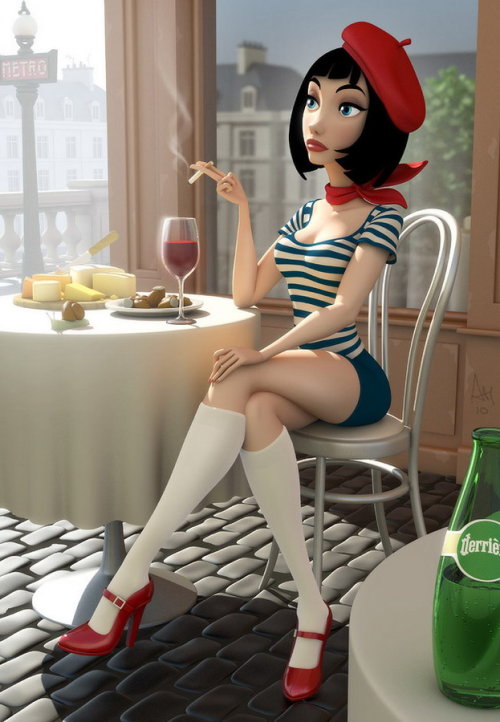A Comparison Between The Jetsons and Futurama

Via: Cinemafique and Ten.com
I am obliged to acknowledge my girlfriend Alicia for the inspiration for this post.
Here we have two of my favourite cartoons that happen to deal with living in the future. One was created in the 1960s and is set in 2062, the other ostensibly the late 1990s and thereafter and is set in the year 3000. Both shows make light of the fact that technological advances have not necessarily made life easier for the human population.
The nature of each shows conception and production play an important role in understanding why each show is the way it is. The Jetsons, created by Hanna-Barbera is clearly the polar opposite of The Flintstones. One is set in the future, the other in the past. However that is where the similarities end. The Flintstones played on the fact that even though they are set in the Stone Age, the characters enjoy all the modern conveniences a real person would. The Jetsons on the other hand is much more a flight of fancy towards the world of tomorrow.
Futurama, while also aimed at prime-time audiences, does not share the same utopian view. In New New York, the culture is rather like the one of today. There is plenty of chaos, but there is also plenty of enjoyment to be had from living in the future. Whereas The Jetsons limited themselves to robots, Futurama goes a step further with aliens.
Granted, the two shows aimed for completely different audiences, and as a result, the humour tends to be quite different. The Jetsons centres very much on the nuclear family, with a hard-working husband bearing the brunt of any comedic escapades that occur. Futurama centres instead on a lazy bachelor and his cohort of work chums who happen to be just as lazy and/or self-centred as himself.
Each show has its own comedic traits so it’s not really fair to directly compare jokes, although both shows make heavy use of the unexpected results from using technology, either through George Jetson getting hauled around by the robot who dresses him or Fry who has a hard time adjusting to the fact that the Moon has been turned into a place with a theme park on it.
Both shows represent the era in which they were created quite well. The Jetson is full of Googie architecture that epitomized the optimism of the future. This was back when we were all supposed to be living on the Moon by the year 2000 and robots and/or automation would take care of our every convenience.
Futurama rounds on these beliefs a little bit, but that is more because we have been told the same thing over and over again since the 50s and we still haven’t sent a person back to the Moon. While we are somewhat awed by the advances of technology in Futurama, we are much more affected by the laughs we get when said technology goes awry, or indeed when it does something completely unexpected.
It is perhaps not really fair to compare two shows that are so vastly different in nature. They are aimed at different audiences, were created at two completely different points in American history and culture and represent two extremely different views of the future.
The Jetsons is also set much closer to the present (currently 52 years away) whereas we still have a whole millennium to go before we get to that time period. That is part of the reason why Matt Groening and David X. Cohen set it that far into the future. Their reasoning was that we have no idea what life will be like after 1,000 years and that makes it all the more believable and expands the opportunities for ideas and laughs.
Personally, I think Futurama is the closer one to the real future, what with all its snarky humour, and yet the Jetsons remains one of my favourites, if only because it is at this point, a throwback to what people expected the future to be like and also because the humour is more akin to The Flintstones. Both shows are entertaining predictions of life in the future that in their own respects, are right.
A Comparison Between The Jetsons and Futurama Read More »













 Woah! Big difference, eh? You can tell this one has real character, and she looks even more French than Colette!
Woah! Big difference, eh? You can tell this one has real character, and she looks even more French than Colette!

